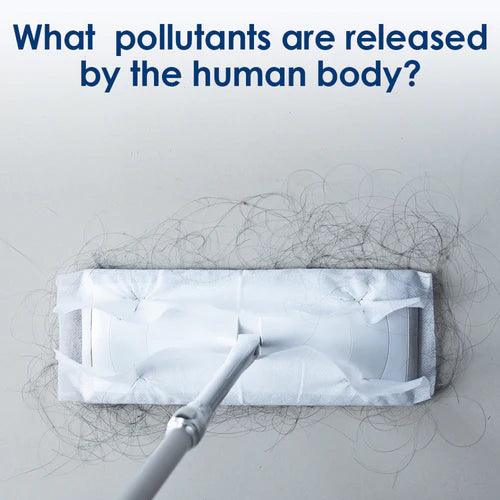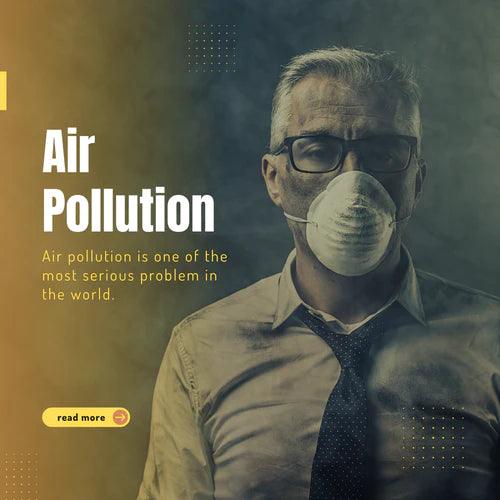Introduction
The human body is a complex system, and it emits many pollutants. The human body releases six gaseous pollutants into the environment, which are oxygen (O2), carbon dioxide (CO2), nitrogen (N2), hydrogen (H2) methane (CH4) and carbon monoxide (CO). These six gaseous pollutants can be harmful if they enter the lungs and bloodstream through breathing. These gases also contain small particles that make them even more harmful than they would have been otherwise.
These are the six gaseous pollutants that human bodies release.
The six gaseous pollutants that human bodies release are oxygen (O2), carbon dioxide (CO2), nitrogen (N2), hydrogen (H2), methane (CH4) and carbon monoxide (CO).
Oxygen (O2)
Oxygen (O2) is one of the most important gaseous pollutants. It is released by the lungs, and it provides a significant amount of energy for living organisms. Oxygen can also be used as an ingredient in other pollutants that are harmful to humans and other animals. For example, CO2 is produced when oxygen combines with carbon-based compounds like carbon monoxide, methane or gasoline molecules. Nitrogen (N2) reactions with oxygen produce ammonia and nitrous oxide which are harmful if they are present in high amounts in our air supply because they can irritate your eyes, nose and throat as well as cause respiratory problems such as asthma attacks if you breathe in too much O2 pollution while exercising outdoors on hot summer days when temperatures reach 80 degrees Fahrenheit or higher outside; this type of dangerous condition happens more often than you might think during intense heat waves due to global warming! Hydrogen peroxide (H2O) also forms when ozone reacts with water vapor molecules but once again these toxic gases do not occur naturally except under certain circumstances so we should not worry about them unless something goes wrong with our environment someday down the road perhaps causing these chemicals to leak into our atmosphere from nearby industrial facilities located far away from where we live now - which hopefully won't happen anytime soon thankfully :)
Carbon dioxide (CO2)
Carbon dioxide (CO2) is a greenhouse gas. It is a waste product of respiration and combustion, and it is also produced by burning fossil fuels such as oil and coal. CO2 emissions are one of the leading causes of climate change, which has been linked to rising temperatures, sea level rise, ocean acidification and extreme weather events.
The amount of carbon dioxide in the atmosphere has increased by 45% since pre-industrial times – largely because people have been burning fossil fuels for energy for more than two centuries. The human body produces about half a kilogram (1 lb) of CO2 per day through respiration alone – nearly as much as an average car does in a year!
The most abundant greenhouse gas in our atmosphere today? You guessed it: carbon dioxide! Your breath contains about 12% oxygen mixed with 88% nitrogen; this mix makes up around 21% of our planet's atmosphere overall (the remaining 78%) being mostly made up by water vapor plus trace amounts from other gases such as methane or sulfur hexafluoride (used for special applications).
Nitrogen (N2)
Nitrogen is a colorless, odorless, tasteless, and non-toxic gas. It's an element that makes up 78% of the earth's atmosphere and is a major component of protein in living organisms. Nitrogen is essential for life on this planet; all plants require it to grow by photosynthesis, which converts carbon dioxide into oxygen and releases nitrogen.
Nitrogen pollution occurs when excessive amounts of nitrogen are released into the environment through human activities or natural processes like lightning strikes or volcanic eruptions. These activities can contribute to soil acidification if nutrients aren't absorbed by plants before they reach groundwater tables where they eventually make their way back into our drinking water supply.[1]
The amount of nitrogen released depends on what kind you're talking about:
Ammonia (NH3) contains one atom each from hydrogen (H) and nitrogen (N). It produces strong odors when it volatilizes at high temperatures because ammonia molecules escape into air as gaseous ions NH4+. Ammonia can be produced naturally by animals such as cats who break down urea through enzymes in their kidneys; however some people have allergies that lead them astray from being able to live healthy lives without suffering severe side effects including death due to respiratory failure.[2]
Hydrogen (H2)
Hydrogen is a colorless, odorless, non-toxic gas with molecular weight of 2.016 grams per mol and an atomic weight of 1.008 grams/mol. It exists as a diatomic molecule consisting of two hydrogen atoms bonded together by the Coulomb force. Hydrogen is the lightest element and it's used to produce electricity in some kind of electrical power plants such as hydroelectric generators and nuclear power plants because it has plenty of stored energy when burning with oxygen or other fuels like diesel fuel (synthetic oil).
Methane (CH4)
Methane is a colorless, odorless gas that can be released by the digestive system of humans and animals. It's also known as natural gas and is a greenhouse gas that contributes to climate change. The average person emits about 0.5 kilograms of methane every day through normal bodily functions such as breathing, digestion, and flatulence. Many animals including cows release methane through their waste (also called manure).
Carbon monoxide (CO)
Carbon monoxide (CO) is a colorless, odorless gas. It is produced by incomplete combustion of carbon-based fuels such as gasoline in your car and wood or other fuels used in your home. Breathing high levels of CO can cause headaches, nausea and vomiting, chest pain, dizziness, tiredness and confusion. At very high levels it causes loss of consciousness or even death
The human body emits a large number of gaseous pollutants.
The human body is a living, breathing organism that emits a large number of gaseous pollutants. These include:
Carbon dioxide (CO2), which is produced as a byproduct of cellular respiration when the body breaks food down into energy to fuel its activities. Carbon dioxide combines with water in the air to form carbonic acid. This process helps regulate Earth's atmospheric temperature so that it can support life on the planet, but too much CO2 buildup and insufficient rainfall will cause global warming and climate change—which could have devastating consequences for humans and other living creatures.
Methane (CH4), which comes from digestive processes like breaking down complex proteins in foods we eat, farting or belching out carbon-based gases from our bowels after consuming beans or other foods high in fiber content (such as meat). Methane gas has been linked to increased greenhouse gas emissions contributing towards global warming effects like rising sea levels due to melting ice caps caused by excessive heat exposure from prolonged periods without rain spells; thus having an adverse effect on agricultural productions around
The human body has other solid pollutants, hair, dander, bacteria, etc.
The human body also releases other solid pollutants, including hair, dander and bacteria. These can be particularly problematic for people who are allergic to them. For example, a person with asthma may suffer from bronchial constriction when exposed to dust mite allergens in bedding or floor carpets.
Have you ever noticed the smell of your home after you've been away for a few days? Vacationing can be stressful on your home and its inhabitants—and not just because it means having someone else use your toothbrush! Home is where most of us live every day—but sometimes we forget how much our bodies impact it and its contents when we're away from it. We may notice something different upon returning: maybe there's an odor coming from somewhere in the house that wasn't there before; maybe there are mold spores growing on the carpeted steps leading up to the front door; maybe there are bits of food stuck between those tiles in the bathroom floor (gross!).
Air purifiers in removing human pollutants
Air purifiers can help you breathe easier and remove pollutants from your home. In order for an air purifier to work properly, it needs to be able to remove the smallest particles in addition to large pieces of dust and debris. Air filters are designed with this in mind, trapping both small particulates that can aggravate allergies or asthma as well as larger pieces of airborne matter like pollen or pet dander.
The best air purifiers will also include a HEPA filter (high efficiency particulate air) which removes 99% of airborne contaminants down to 0.3 microns in diameter—about 1/30th the width of a human hair! That’s why these devices are so effective at reducing odors caused by smoke or pets because they trap everything—including gases such as carbon monoxide —and then release clean air into your home through an exhaust vent installed near windows
Conclusion
We should take care of the pollution of our bodies.










Leave a comment
All comments are moderated before being published.
This site is protected by hCaptcha and the hCaptcha Privacy Policy and Terms of Service apply.